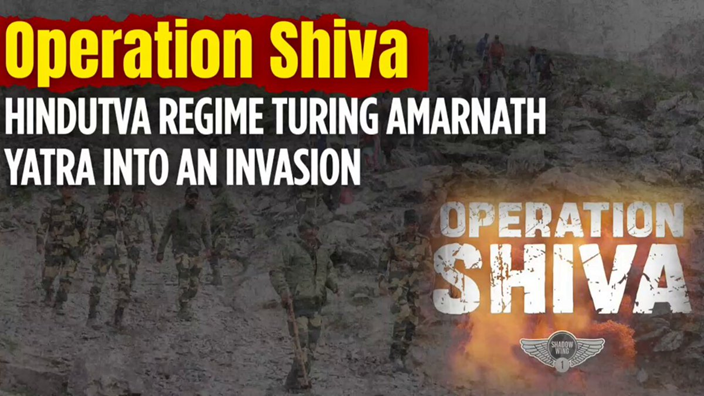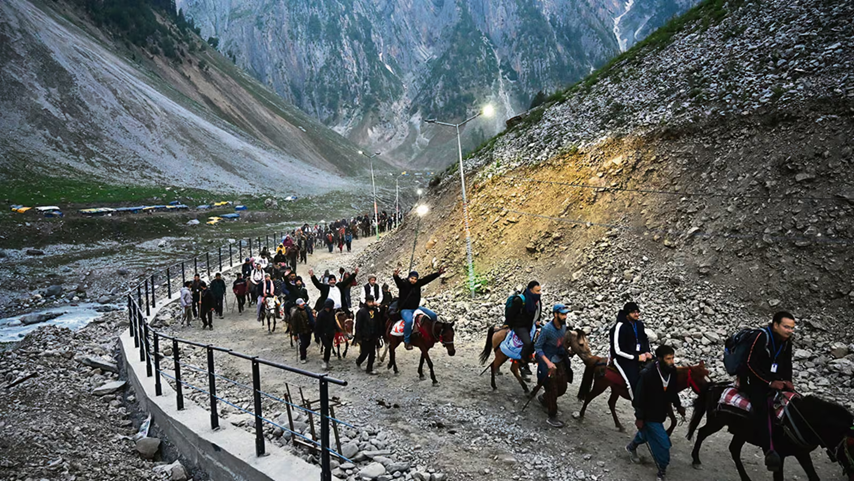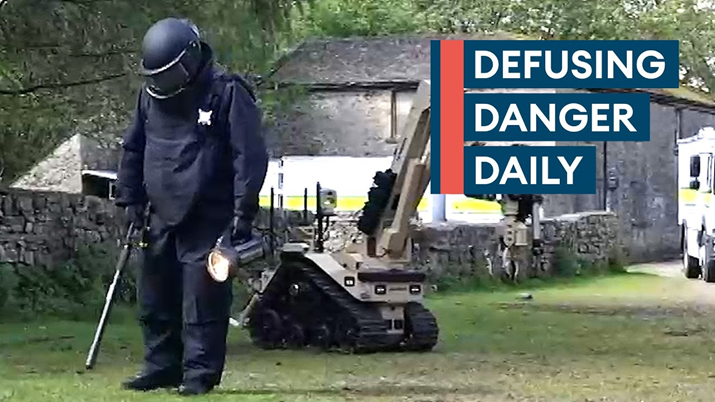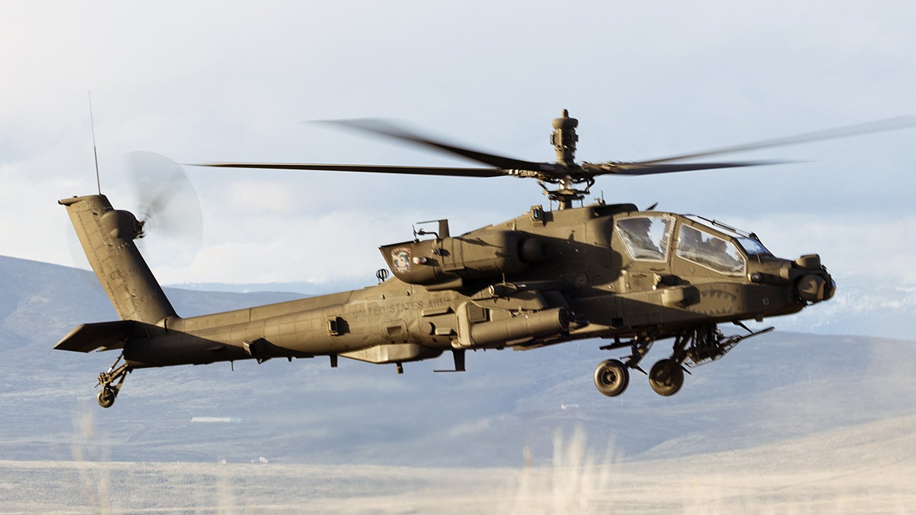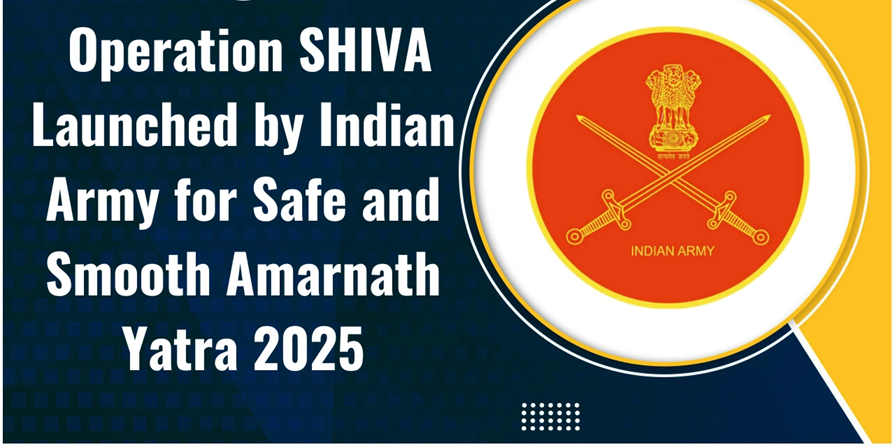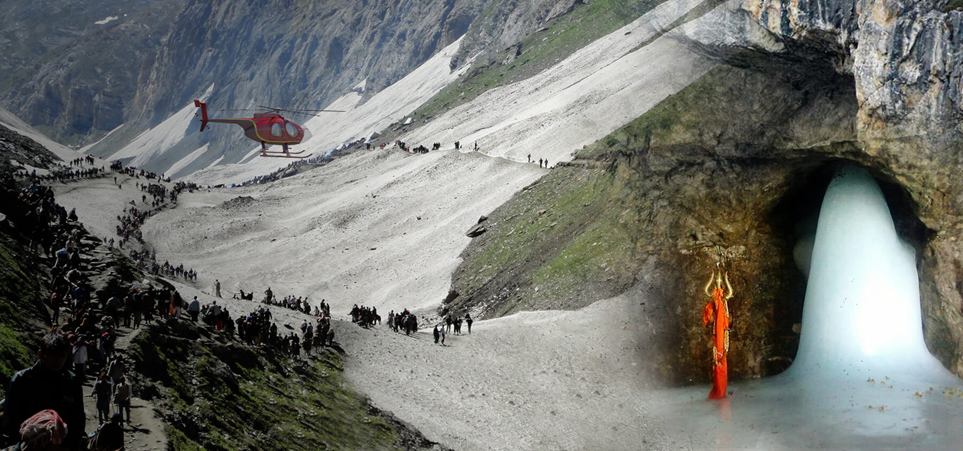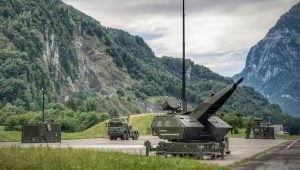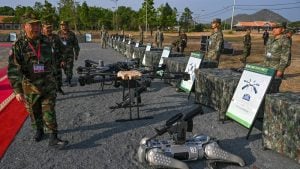The Indian Army has launched Operation Shiva as part of a multi-tier security setup to secure the ongoing Amarnath Yatra deploying 8,500 troops and a counter-unmanned aerial system (C-UAS) grid on the twin routes to the cave shrine, an official on Friday said.
Operation SHIVA By Indian Army : 8,500 Troops Deployed
Why In News
- The Indian Army has launched Operation Shiva as part of a multi-tier security setup to secure the ongoing Amarnath Yatra deploying 8,500 troops and a counter-unmanned aerial system (C-UAS) grid on the twin routes to the cave shrine, an official on Friday said.
Amarnath Yatra
- The 38-day pilgrimage to the 3,880-metre-high shrine commenced on July 3 from the valley via twin tracks – the traditional 48-kilometre-long Nunwan-Pahalgam route in Anantnag district and the 14-kilometre shorter but steeper Baltal route in Ganderbal district. The yatra will conclude on August 9.
- “The Indian Army has launched Operation Shiva in close coordination with the civil administration and Central Armed Police Forces (CAPFs) to ensure the smooth and secure conduct of the Amarnath Yatra,”.
- The spokesperson said this annual high-tempo operation aims to provide a robust security architecture along both the northern and southern yatra routes, particularly in light of the heightened threat from Pakistan-backed proxies in the aftermath of Operation Sindoor.
- “As part of this year’s enhanced security framework, over 8,500 troops have been deployed, supported by a wide array of technological and operational resources,” he added.
Security Measures
- In Massive security operation for ‘sacred pilgrimage’- Twin routes under constant vigilance.
- Technology-driven counter-terror setup : In response to heightened threats from Pakistan-backed proxies in the wake of ‘Operation Sindoor’, the Army has established a multi-tier counter-terrorism framework.
- A counter-unmanned aerial system (C-UAS) grid with over 50 C-UAS and electronic warfare systems to neutralise drone threats.
- Live monitoring of the yatra routes and the cave shrine using drones and high-resolution PTZ cameras. Real-time tracking of yatra convoys between Jammu and the shrine to maintain situational awareness and enable swift threat response.
- Comprehensive support and emergency readiness : In addition to security, the Army has also prioritised disaster preparedness and pilgrim welfare- Engineer task forces are deployed for bridge construction, route widening, and emergency mitigation
- Medical infrastructure includes more than 150 doctors and paramedics, two advanced dressing stations, nine aid posts, a 100-bed hospital, and 26 oxygen booths with 2,00,000 litres of oxygen
- Emergency logistics consist of bomb disposal squads, seamless communication networks, technical support units, emergency rations for 25,000 people, and heavy machinery such as bulldozers and excavators.
- Air and ground forces on standby : Indian Army helicopters remain on standby for any contingency. Quick Reaction Teams (QRTs), tent cities, water points, and signal companies have also been strategically positioned to ensure smooth and safe passage for pilgrims.
- Unwavering commitment to devotee safety : “Operation Shiva” underscores the Army’s dedication to ensuring a peaceful and spiritually enriching experience for pilgrims. More than 1.4 lakh devotees have already paid obeisance to the ice lingam of Lord Shiva, and over four lakh have registered online for the yatra this year.
- In 2023, the pilgrimage saw over 5.1 lakh devotees, and this year’s figures are expected to surpass that, with enhanced security reinforcing faith and safety along the sacred journey.
